Flattop Amphibious Assault Ship Looks Set To Be Pummeled With Weapons In RIMPAC Wargames
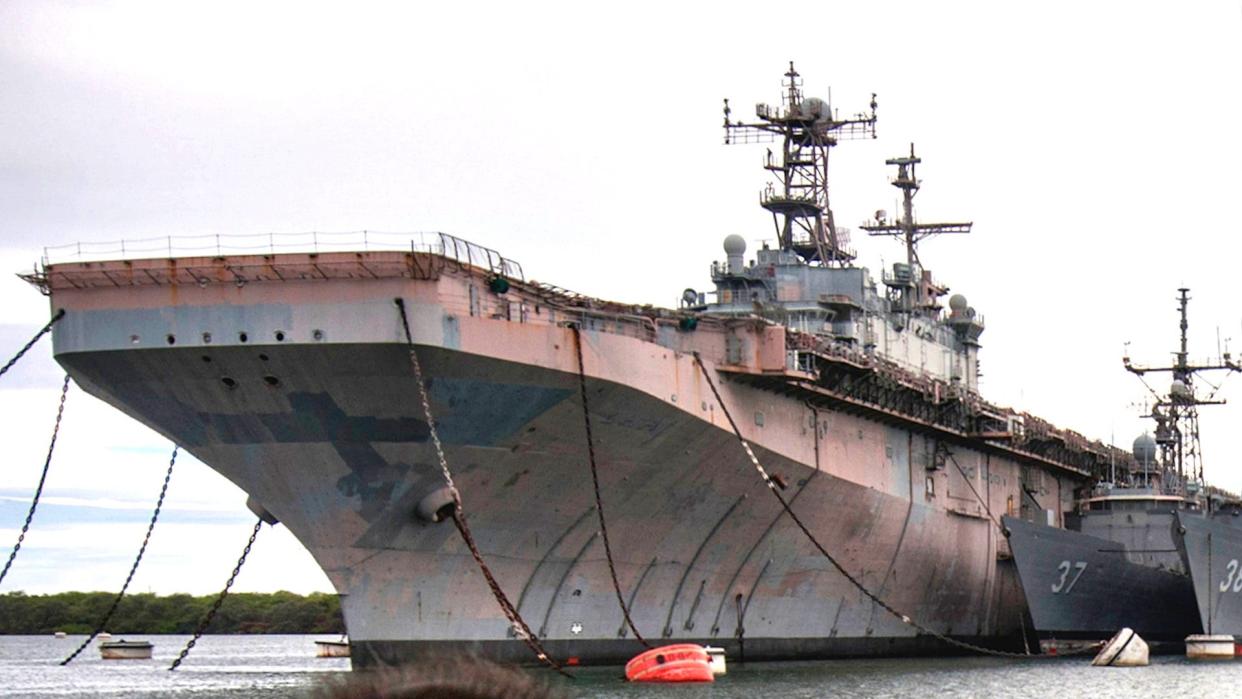
The ex-USS Tarawa, a decommissioned U.S. Navy amphibious assault ship, is set to be sunk off the coast of Hawaii at the upcoming 2024 Rim of the Pacific (RIMPAC) exercise. This is the first time in nearly two decades that a Tarawa class vessel will be destroyed as a target and it is only the second example to be used for this purpose. This is also the first time in more than a decade that an amphibious assault ship of any kind will be sent beneath the waves in a U.S.-led exercise. As such, RIMPAC 2024 will offer a valuable opportunity to gather data on the effectiveness of different weapons against such a large warship, as well as how the vessel stands up to the punishment.
Author's Note: We have seen some unconfirmed information about the exact disposition of and plan for the ex-Tarawa. We have reached out to the U.S. Navy for additional clarification.
Tarawa, which was decommissioned in 2009, is currently at Ford Island in the center of Pearl Harbor in Hawaii. This year's iteration of the U.S.-led multi-national RIMPAC exercise is set to kick off on June 26 and run through August 2. A so-called sink exercise (SINKEX) is the capstone event at each biennial RIMPAC, though the type of ship used varies.
USS Tarawa, the first of its class, entered Navy service in 1976. During the 1970s and 1980s, the ship and the U.S. Marine forces it carried largely conducted routine cruises in the Western Pacific. It also deployed further west on occasion, including to support international peacekeeping operations in Lebanon in 1983.
As part of a larger amphibious force, Tarawa brought Marines to Saudi Arabia in 1990 as part of Operation Desert Shield in the immediate run-up to the first Gulf War. As part of subsequent deployments with other amphibious warships, the vessel conducted additional cruises in the Western Pacific and also returned to the Middle East on multiple occasions. This ultimately included participating in operations in Iraq following the U.S.-led invasion of the country in 2003. Tarawa's last deployment involved supporting the ongoing U.S. missions in Iraq and Afghanistan.
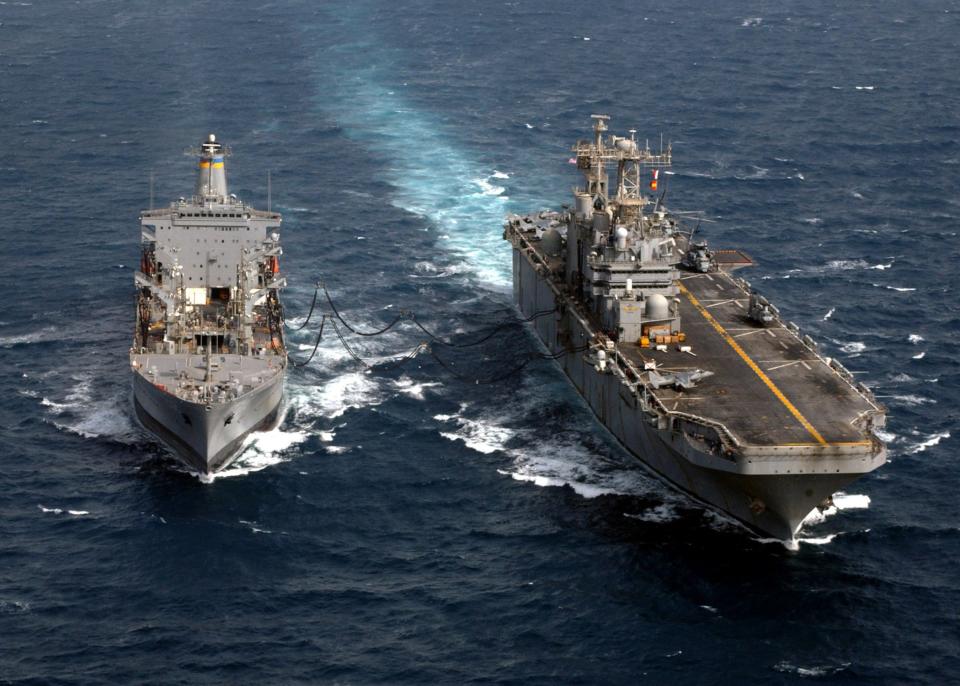
The Navy has been planning to use Tarawa as a target during a major exercise since at least 2022. Another ship in the class, the ex-USS Peleliu, is also set to be used in a SINKEX at some point in the future.
As already noted, this is not the first time a Tarawa class ship has been used as the target at RIMPAC. The ex-USS Belleau Wood was sunk during the 2006 iteration of the exercise. Five of the seven Iwo Jima class amphibious assault ships, which preceded the Tarawas in Navy service, were also used in other RIMPAC SINKEXs (the other two were scrapped). The ex-USS New Orleans was the last one to be sent to the bottom of the Pacific at the 2010 iteration of the exercise.
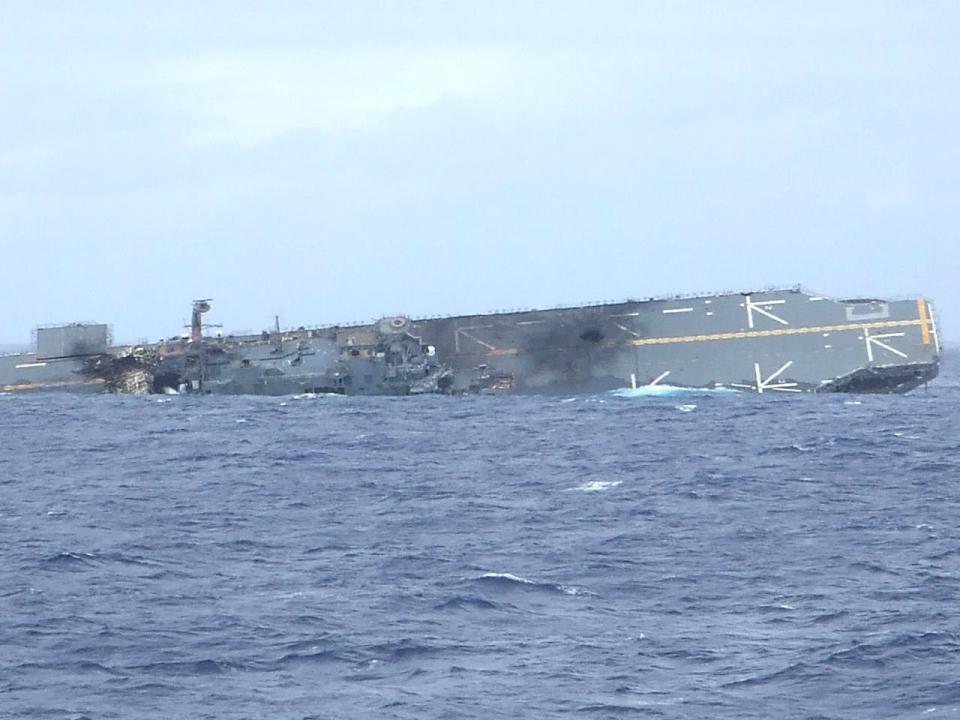
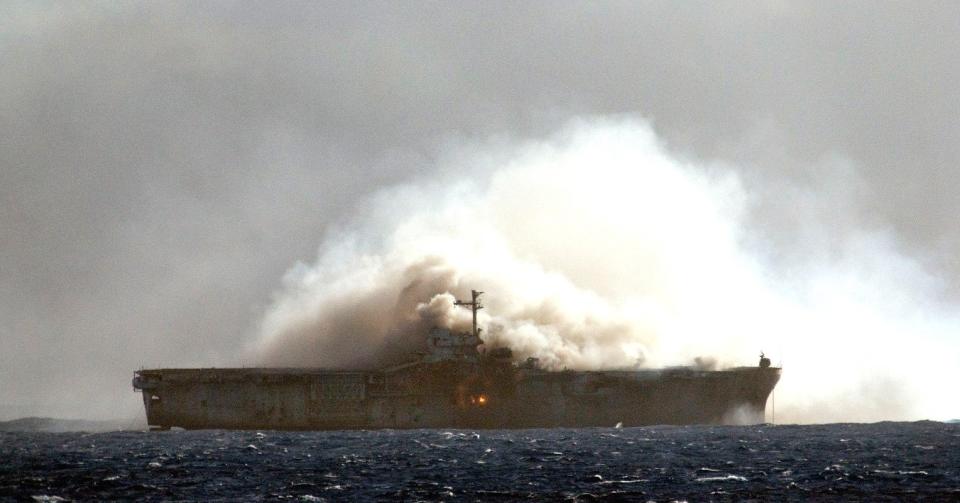
However, Tarawa's impending fate is still significant. Not only has it been a very long time since the Navy used an amphibious assault ship of any kind for the RIMPAC SINKEX, but is the largest ship of any kind to be used in more than a decade. When in service, it had a displacement of nearly 40,000 tons with a full load, though it has now been stripped down. Even so, the ex-USS Durham, a Charleston class amphibious cargo ship sunk at RIMPAC 2020, and one of the biggest ships used for the SINKEX in recent years, displaced 18,322 tons with a full load. Decommissioned Oliver Hazard Perry class frigates and smaller amphibious warfare ships have more typically been used in the past few RIMPACs.
https://www.youtube.com/watch?v=WxYg72dWjII
Furthermore, though the former USS Tarawa will not be firing back during the upcoming SINKEX, amphibious assault ships are high-value assets that are designed to be well-protected right down to their core structures and otherwise resilient to damage thanks to redundant features. The Tarawa class ships also a represent more modern design than the Iwo Jima class types that have been sunk in the past.
On top of all this, the Navy has no real options for conducting live-fire exercises or destructive testing against anything larger and with a similar degree of protection than a Tarawa class amphibious assault ship. The service has only deliberately sunk a post-World War II supercarrier once, in a test in 2005 involving the decommissioned Kitty Hawk class USS America, as you can read more about here. The Navy may well be prevented from ever doing something like that again due to environmental and other factors given that all of its current aircraft carriers are nuclear-powered. The last of the service's conventionally powered carriers are now in the process of being scrapped, as is its first-ever nuclear-powered type, the ex-USS Enterprise.
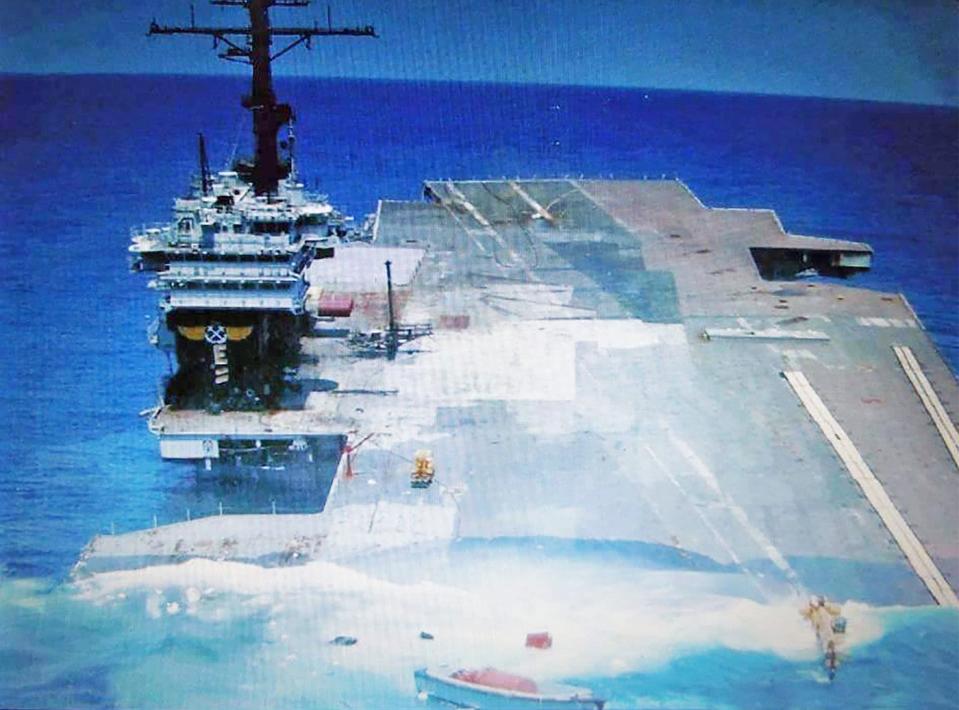
With all this in mind, sinking the ex-USS Tarawa will therefore provide a rare opportunity for the Navy to gather data about weapon effectiveness and the resiliency of especially large and well-protected warships to various types of threats. Advanced modeling and simulation, as well as more limited destructive testing, can also provide very useful information, but is not a substitute for actually being able to see what happens to a full-size warship when it gets pummeled.
What weapons will be used in the upcoming 2024 RIMPAC SINKEX is unknown, though submarine-fired heavy-weight torpedoes are typically used to deliver the final blow in such live-fire events. New and improved anti-ship weapons, as well as ever-evolving tactics, techniques, and procedures, have been demonstrated during RIMPACs in the past. They have also provided space to explore the use of weapons not necessarily designed for use against warships in that role.
RIMPAC SINKEXs, in general, also provide U.S. allies and partners with a live-fire opportunity that may well not have access to otherwise. Forces from Australia, Belgium, Brazil, Brunei, Canada, Chile, Colombia, Denmark, Ecuador, France, Germany, India, Indonesia, Israel, Italy, Japan, Malaysia, Mexico, Netherlands, New Zealand, Peru, the Republic of Korea, the Republic of the Philippines, Singapore, Sri Lanka, Thailand, Tonga, the United Kingdom, in addition to the United States, are set to take part in this year's iteration o the exercise. A total of 40 surface ships, three submarines, over 150 aircraft, and more than 25,000 personnel overall (including ground forces from 14 countries) are expected to take part, per the Navy.
"The theme of RIMPAC 2024 is 'Partners: Integrated and Prepared.' To promote a free and open Indo-Pacific, Exercise RIMPAC is the premier joint and combined maritime exercise, utilizing and preserving a world class maritime training environment," according to a press release the Navy's Pacific Fleet, which is leading the exercise, put out in May. "With inclusivity at its core, RIMPAC fosters multi-national cooperation and trust, leverages interoperability, and achieves respective national objectives to strengthen integrated, prepared, coalition partners."
RIMPAC 2024 and the planned sinking of the ex-Tarawa come against the backdrop of a steady drumbeat of concerns about the potential for a major conflict in the Pacific region between the United States (which could involve its allies and partners) and China. The People's Liberation Army (PLA) has significantly increased the scale and scope of its anti-ship arsenal, to include new cruise and ballistic missiles capable of engaging enemy vessels, and continues to evolve its capabilities in this regard. Friendly amphibious warfare ships would be high-priority targets in any such future high-end fight.
As an aside, it is interesting to note that Chinese forces have participated in past RIMPACs, underscoring how significantly the geopolitical environment has changed in the past decade or so.
There have been growing and increasingly worried discussions in recent years about the Navy's capacity to keep warships in the fight and its ability to repair battle-damaged vessels. The loss of the Wasp class amphibious assault ship USS Bonhomme Richard to a massive pier-side fire in 2020, which took four days to extinguish, only added to fears about what might happen even to especially large and well-protected warships in an actual combat scenario.
https://www.youtube.com/watch?v=6v1zhhIHL0o
At the same time, China's People's Liberation Army Navy (PLAN) is significantly expanding the size of its own amphibious assault ship fleets, which would be top targets for U.S. forces. The PLAN has three Type 075s in service and a fourth under construction. The Type 075 design is similar in many broad respects, including size, to the U.S. Navy's Wasp class and the now-decommissioned Tarawas.
https://www.youtube.com/watch?v=RiuVzIeOUHo
The Chinese are also now in the process of building the first example of a substantially bigger amphibious assault ship with an unusually large flight deck. The vessel is expected to have at least one electromagnetic catapult and arresting gear to support an air wing that includes uncrewed combat air vehicles (UCAV) and other fixed-wing drones. Overall, what is commonly known now as the Type 076 looks set to be unlike anything currently in service elsewhere in the world, as you can learn more about here.
If nothing else, sinking the Tarawa at this year's RIMPAC underscores the real possibility that even the Navy's largest warships could be lost during a future large-scale conflict. During a major fight, it is the thousands of crew members and other personnel onboard such vessels that would be truly irreplaceable in short order.
Altogether, the SINKEX at the RIMPAC 2024 is shaping up to be a particularly significant event involving the largest target ship in years.
Contact the author: joe@twz.com
